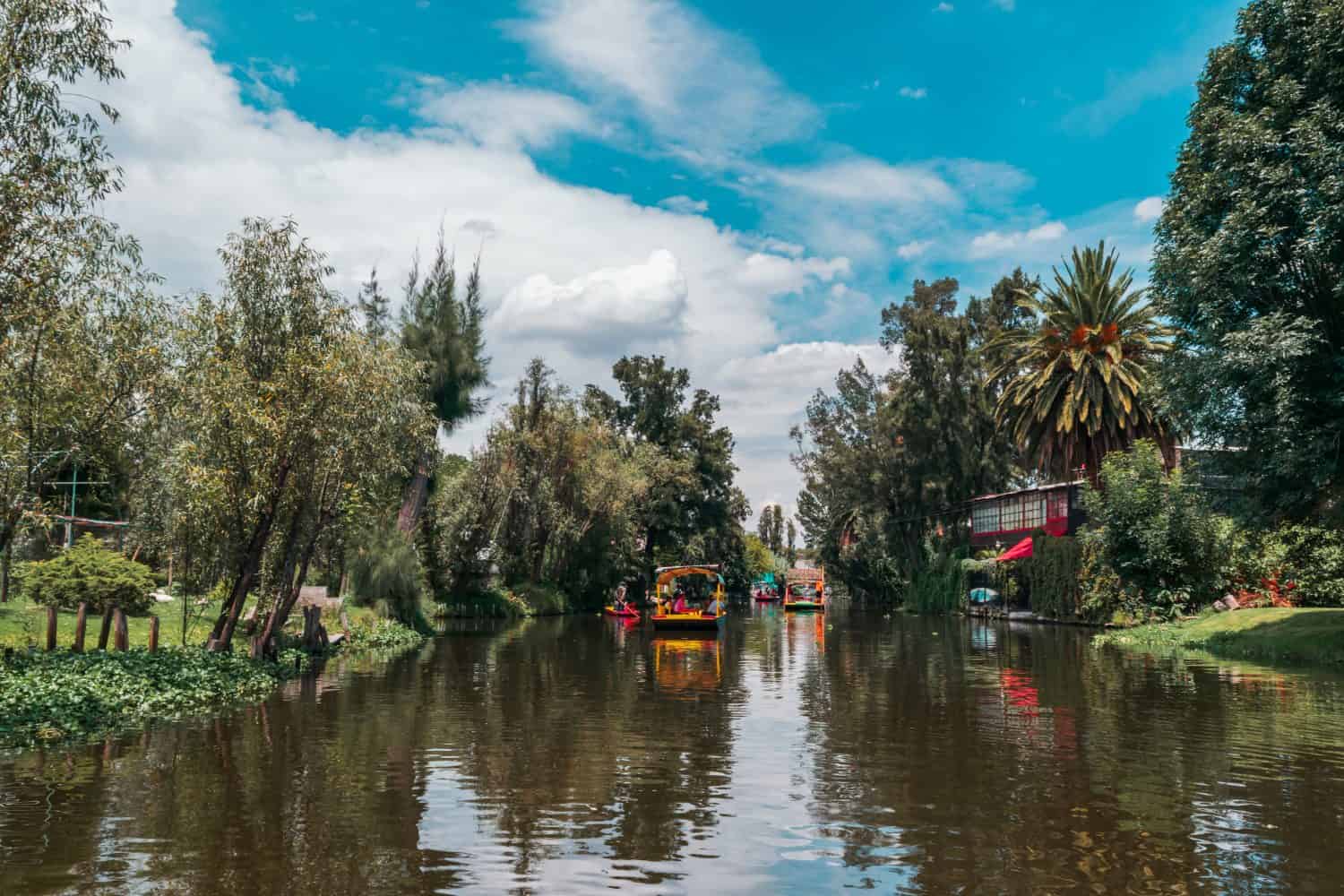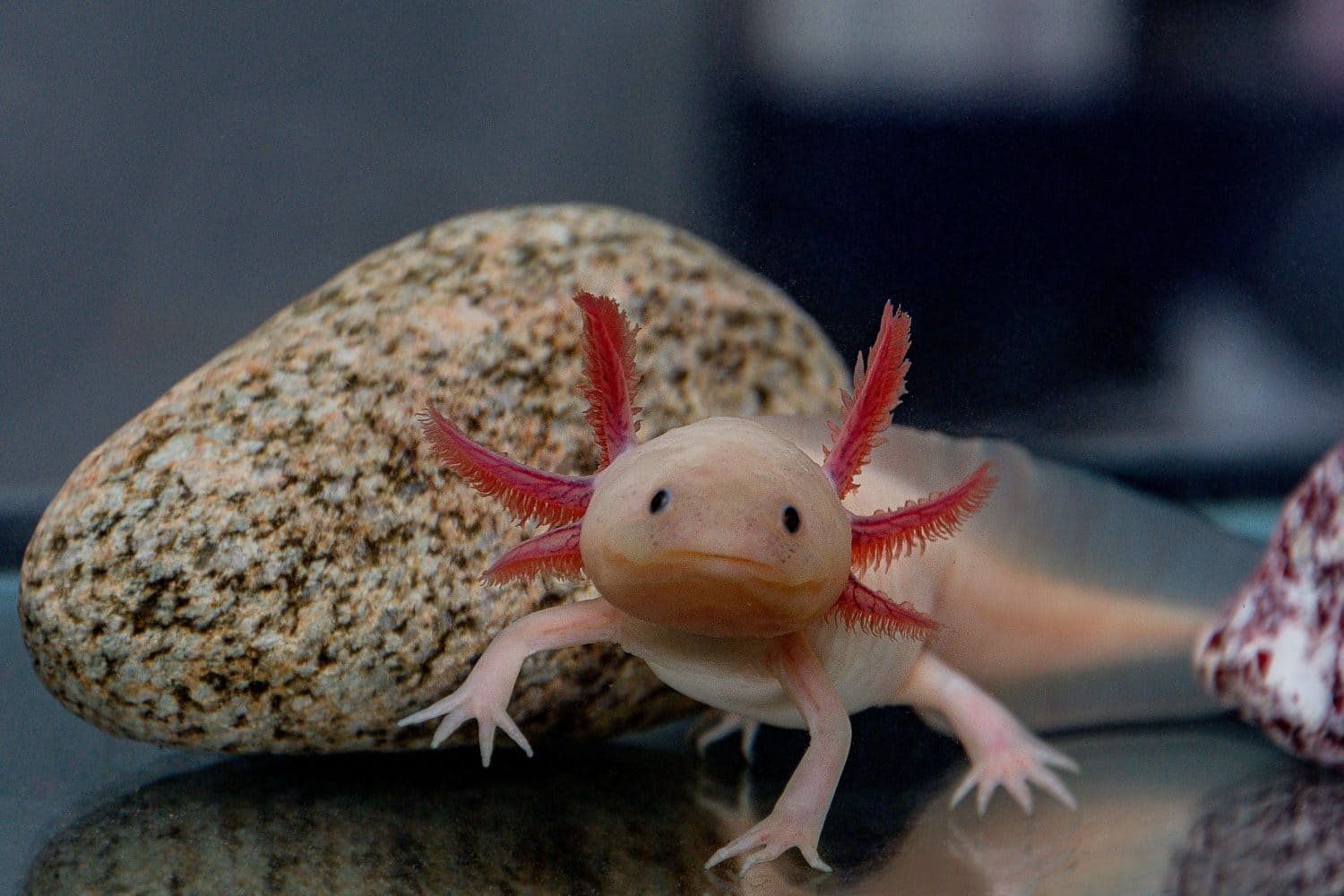Sometimes called a “Mexican walking fish,” the axolotl is a fully aquatic salamander species. However, whereas most salamander species go through metamorphosis to live on land, the axolotl does not. Instead, they retain their larval features, such as feathery gills, for their entire lifespan. This phenomenon is known as neoteny, and the result is a genuinely captivating appearance. Additionally, the occurrence of neoteny in these fascinating creatures also means that the best habitat for axolotl is underwater. However, there is a bit more to it.
What is the Best Habitat for Axolotl to Flourish?

Lake Xochimilco is one of the only two lakes where axolotls live.
©Liz Pichardo/Shutterstock.com
Native to Mexico, the axolotl is only found in two specific lakes: Lake Xochimilco in southern Mexico City and Lake Chalco in the Valley of Mexico. Since they are lentic, they only inhabit still-water lakes, so recreating such an environment is crucial for axolotl to thrive. In their natural habitat, the amphibians are critically endangered due to pollution. They are also threatened by habitat degradation and water diversion from a continuously increasing human population.
Nevertheless, people can keep axolotls for pets. However, they are not recommended for beginner pet owners. The axolotl requires tentative care, meaning that novice amphibian owners can easily make a detrimental error. Additionally, due to their unusual biological qualities and overall rarity, few vets are qualified to treat them. Still, if you plan to own a pet axolotl, the first thing to understand intimately is the best habitat for them to prosper.
Best Aquarium to House an Axolotl

This 40-gallon aquarium with plants and large decor is perfect for an axolotl.
©Ian Grainger/Shutterstock.com
First, the axolotl requires plenty of space to thrive. A tank between 29 and 40 gallons is most highly recommended. Remember that bigger is always better for them. Smaller “grow-out tanks” are unrealistic for axolotls as juveniles grow exceptionally quickly. Other than space, it is imperative to keep their water cool.
Axolotls are most comfortable in water between 60° and 68°F (15-20°C). Temperatures that exceed 68°F (20°C) will rapidly result in stress for the axolotl and progress the development of various diseases. However, if water is too cool, below 60°F (15°C), their metabolism will slow, leading to detrimental effects over time. Other than temperature, the quality of their water is also essential.
A cycled aquarium will contain 0 parts per million (ppm) of ammonia and 5-20 ppm of nitrate to ensure the highest-quality water for your axolotl. A level of 0 ppm nitrate indicates that the tank is not cycled correctly. Although it can take 4-8 weeks for your tank to cycle fully, such is required for axolotl to thrive. A water conditioner is a must when adding new water to a tank. However, axolotls are irritated by aloe vera, so make sure the conditioner does not contain any aloe or iodine. The pH levels of the water should always be between 6.5 and 8.0, and weekly water changes are essential.
Maintain an Enriching Environment for Your Axolotl
When considering the best habitat for axolotl, providing the most comfortable, enriching environment possible is significant. Axolotls are notorious loners. This means that not only do they thrive in solitude, but they also prefer to have little hiding spots. The ideal habitat for an axolotl will include plenty of décor and plants. However, if adding living plants, it is highly recommended to use species that can survive in low light and cold water.
Low light is needed as the best habitat for axolotls calls for low lighting since they do not have eyelids. This makes their eyes extremely light-sensitive. Easy plants for their tank are Anubias, java fern, Marimo algae balls, and many others. However, if adding live plants, do not add fertilizers. Low-maintenance plants do not require supplementation anyway, and the chemicals in fertilizers can be harmful to their semi-permeable amphibian skin.
Additionally, adding air stones as part of the décor is recommended. Many axolotls will enjoy interacting with the bubbles. Also, it is best to rearrange tank decorations periodically. This provides new places for the axolotl to discover, which can substantially aid their overall health, growth, and enrichment.
The Best Habitat for Axolotl Includes Proper Substrate

Large rocks like these can be used as a safe substrate for axolotls.
©Iva Dimova/Shutterstock.com
Interestingly, housing two or more axolotls in the same tank is not recommended. This is because they tend to nip at everything that moves, including each other! Specifically, when an axolotl sees its caregiver near its tank, it may quickly equate any other movements with a food source. Ultimately, they can quickly nip at their tankmate or anything else moving around. Because they are prone to nibble at just about anything, a substrate that does not pose any hazards is needed.
Extremely fine sand with a grain size under 1 mm is recommended. Such sand particles are typically ingested and digested without any issue. However, even this only applies to axolotls greater than six inches (15 cm) in length. For baby axolotl, no substrate is the safest route to take as their small systems cannot process any sand whatsoever. Nevertheless, sand is not the only substrate option for an axolotl.
Many people choose to use items such as large rocks or untreated tiles as substrate. The critical detail to understand is the size. As mentioned earlier, axolotls will nibble at nearly anything as long as it fits in their mouths. For reference, anything equal to the size of their head or smaller is at risk of being nibbled. If using rocks as substrate, ensure no stone is smaller than their head.
Tread Carefully!
All in all, axolotls are incredibly precious and unique creatures. They require extensive care and delicate preparation to ensure they are free to enjoy their entire lifespans. Since they are endangered in the wild (and also adorable), it’s easy to understand why many people might wish to keep one as a pet. However, those considering such an endeavor must know the best habitat for axolotl to thrive and recreate this environment as closely as possible.
The photo featured at the top of this post is © axolotlowner/Shutterstock.com
Thank you for reading! Have some feedback for us? Contact the AZ Animals editorial team.







